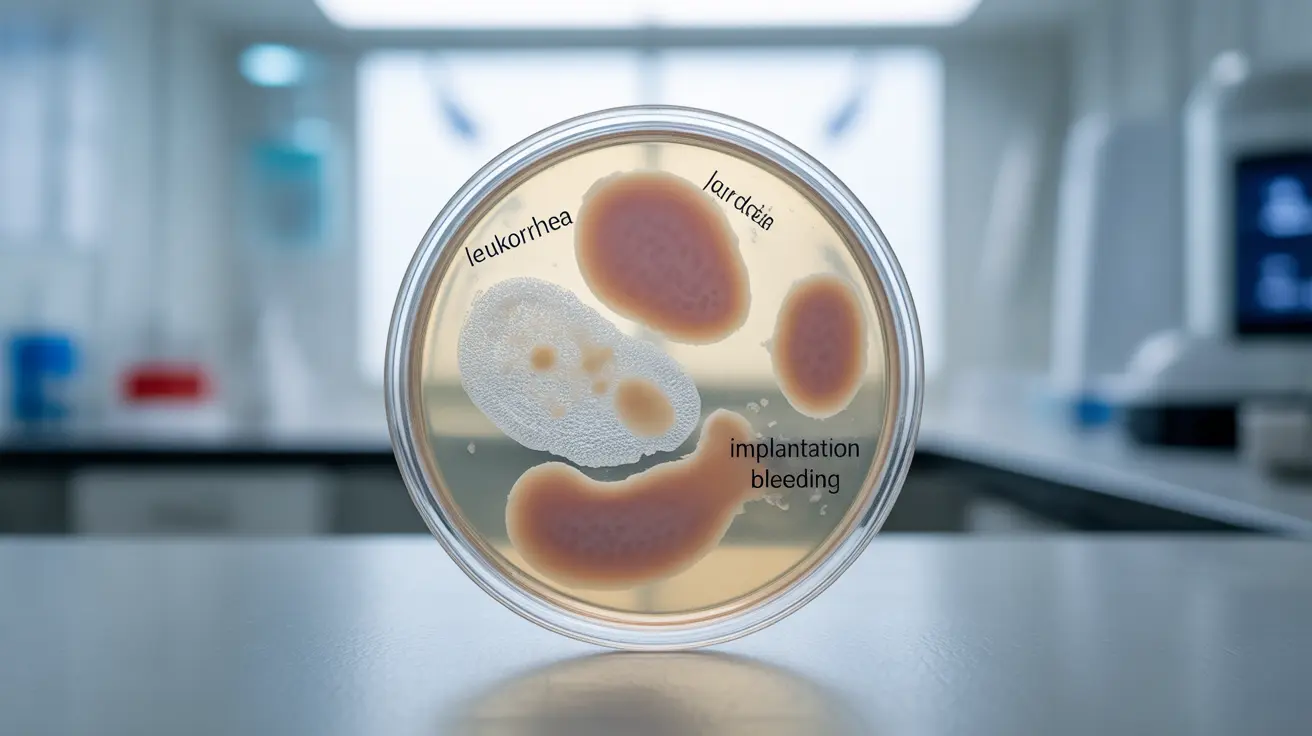Understanding the changes in vaginal discharge during early pregnancy can provide valuable insights into your body's transformations. Many women notice distinct changes in their cervical mucus and vaginal discharge around the time of implantation and early pregnancy, though these signs can vary significantly from person to person.
In this comprehensive guide, we'll explore the characteristics of early pregnancy discharge, implantation signs, and when these changes typically occur. We'll help you understand what's normal and when to seek medical attention.
Understanding Early Pregnancy Discharge
During early pregnancy, hormonal changes can cause noticeable differences in vaginal discharge. The most common type of early pregnancy discharge is called leukorrhea, which typically appears:
- Milky white or clear in color
- Mild-smelling or odorless
- Thin to moderately thick in consistency
- More abundant than usual
This increase in discharge serves an important purpose: it helps protect the developing pregnancy by maintaining a healthy vaginal pH and preventing infections from traveling up to the uterus.
Implantation Signs and Discharge Changes
Implantation occurs when a fertilized egg attaches to the uterine wall, typically 6-12 days after ovulation. During this time, you might notice several changes:
Implantation Bleeding Characteristics
Implantation bleeding, when it occurs, typically appears as:
- Light pink or brown spotting
- Much lighter than a normal period
- Lasting only a few hours to 2-3 days
- Not containing clots
Associated Discharge Changes
Around implantation, you might observe:
- Increased cervical mucus production
- Changes in discharge consistency
- Slight variations in color or texture
Timeline of Early Pregnancy Discharge Changes
Understanding when these changes occur can help you better interpret your body's signals:
First Few Weeks
Immediately after conception and during implantation, you might notice:
- Increased moisture
- Thicker consistency
- White or cream-colored discharge
Weeks 4-8
As pregnancy hormones increase, you may experience:
- More abundant discharge
- Consistently thick texture
- Clear to milky white appearance
When to Seek Medical Attention
While increased discharge is normal during early pregnancy, certain symptoms warrant medical evaluation:
- Greenish or yellow discharge
- Strong, unpleasant odor
- Burning or itching sensation
- Redness or swelling
- Significant pelvic pain
Frequently Asked Questions
What does cervical mucus look like during early pregnancy and how does it change?
During early pregnancy, cervical mucus typically becomes thicker, creamier, and more abundant. It usually appears white or cream-colored and maintains a mild or neutral odor. These changes occur due to increased estrogen and progesterone levels.
Can implantation cause vaginal discharge and what does implantation bleeding look like?
Yes, implantation can cause changes in vaginal discharge. Implantation bleeding, when present, appears as light pink or brown spotting, much lighter than a period. It's typically accompanied by clear or white discharge and lasts only a few days.
How soon after implantation can I notice changes in cervical mucus or discharge?
Changes in cervical mucus can occur as soon as implantation takes place, typically 6-12 days after ovulation. However, some women might not notice significant changes until a few weeks into pregnancy.
Is increased or watery discharge a reliable sign of early pregnancy?
While increased discharge is common in early pregnancy, it's not a definitive pregnancy sign on its own. Many women experience similar discharge changes before their period or due to other hormonal fluctuations.
When should I take a pregnancy test if I notice implantation bleeding or changes in vaginal discharge?
It's best to wait until at least the first day of your missed period to take a pregnancy test for the most accurate results. If you experience implantation bleeding, wait at least 3-4 days before testing to allow hCG levels to become detectable.




